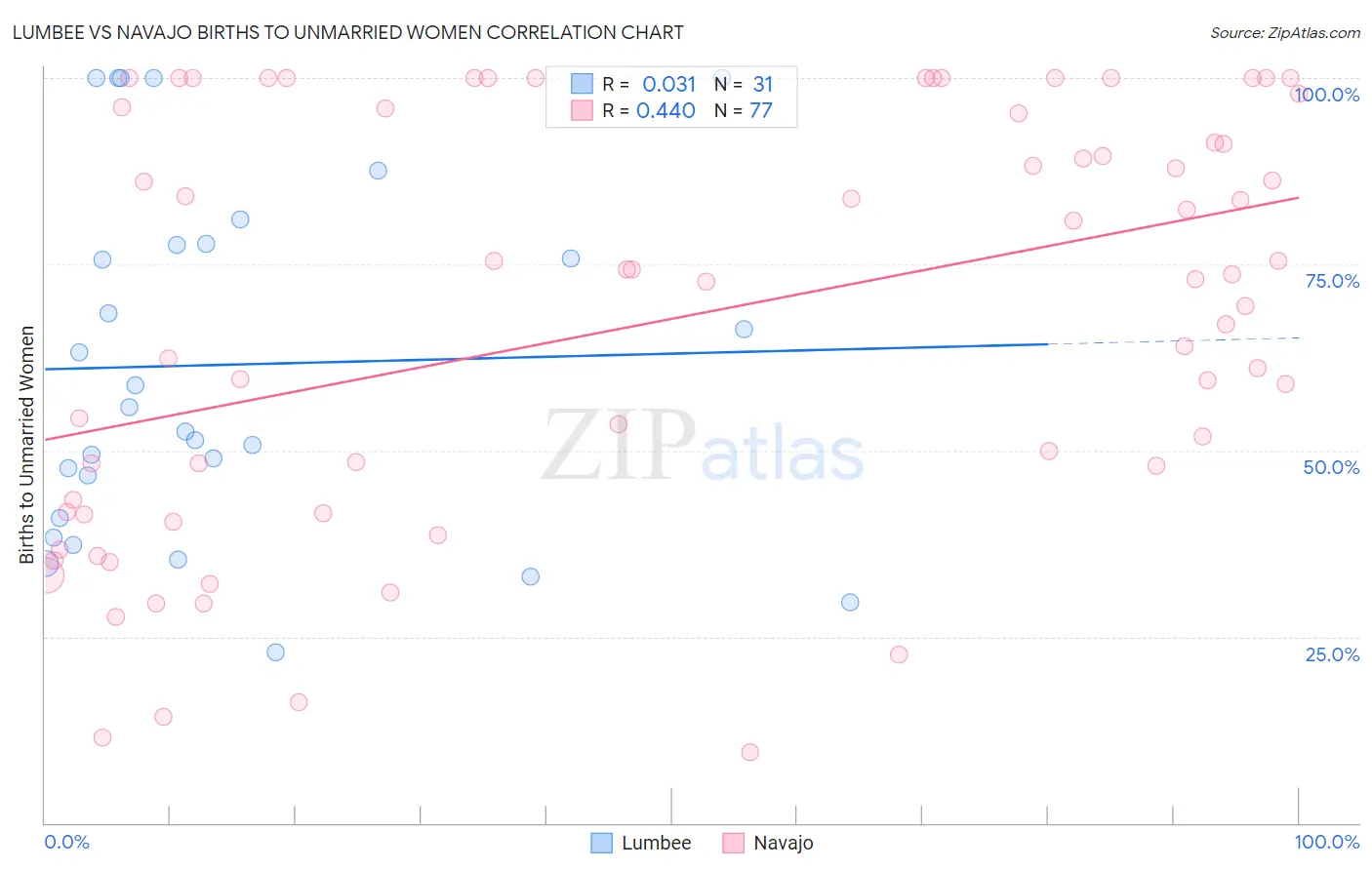Lumbee vs Navajo Births to Unmarried Women
COMPARE
Lumbee
Navajo
Births to Unmarried Women
Births to Unmarried Women Comparison
Lumbee
Navajo
48.2%
BIRTHS TO UNMARRIED WOMEN
0.0/ 100
METRIC RATING
339th/ 347
METRIC RANK
51.5%
BIRTHS TO UNMARRIED WOMEN
0.0/ 100
METRIC RATING
344th/ 347
METRIC RANK
Lumbee vs Navajo Births to Unmarried Women Correlation Chart
The statistical analysis conducted on geographies consisting of 89,846,476 people shows no correlation between the proportion of Lumbee and percentage of births to unmarried women in the United States with a correlation coefficient (R) of 0.031 and weighted average of 48.2%. Similarly, the statistical analysis conducted on geographies consisting of 217,645,361 people shows a moderate positive correlation between the proportion of Navajo and percentage of births to unmarried women in the United States with a correlation coefficient (R) of 0.440 and weighted average of 51.5%, a difference of 6.8%.

Births to Unmarried Women Correlation Summary
| Measurement | Lumbee | Navajo |
| Minimum | 22.9% | 9.5% |
| Maximum | 100.0% | 100.0% |
| Range | 77.1% | 90.5% |
| Mean | 61.5% | 67.3% |
| Median | 55.9% | 72.9% |
| Interquartile 25% (IQ1) | 40.9% | 41.6% |
| Interquartile 75% (IQ3) | 77.7% | 95.6% |
| Interquartile Range (IQR) | 36.8% | 54.0% |
| Standard Deviation (Sample) | 23.6% | 27.7% |
| Standard Deviation (Population) | 23.3% | 27.6% |
Demographics Similar to Lumbee and Navajo by Births to Unmarried Women
In terms of births to unmarried women, the demographic groups most similar to Lumbee are Arapaho (47.1%, a difference of 2.3%), Tohono O'odham (49.8%, a difference of 3.4%), Houma (46.6%, a difference of 3.5%), Hopi (50.8%, a difference of 5.4%), and Puerto Rican (45.7%, a difference of 5.5%). Similarly, the demographic groups most similar to Navajo are Pima (51.5%, a difference of 0.040%), Menominee (51.1%, a difference of 0.74%), Inupiat (52.1%, a difference of 1.2%), Hopi (50.8%, a difference of 1.3%), and Tohono O'odham (49.8%, a difference of 3.3%).
| Demographics | Rating | Rank | Births to Unmarried Women |
| Immigrants | Cabo Verde | 0.0 /100 | #328 | Tragic 42.2% |
| Paiute | 0.0 /100 | #329 | Tragic 42.5% |
| Chippewa | 0.0 /100 | #330 | Tragic 42.6% |
| Natives/Alaskans | 0.0 /100 | #331 | Tragic 43.0% |
| Kiowa | 0.0 /100 | #332 | Tragic 43.1% |
| Blacks/African Americans | 0.0 /100 | #333 | Tragic 44.3% |
| Yuman | 0.0 /100 | #334 | Tragic 44.4% |
| Colville | 0.0 /100 | #335 | Tragic 45.3% |
| Puerto Ricans | 0.0 /100 | #336 | Tragic 45.7% |
| Houma | 0.0 /100 | #337 | Tragic 46.6% |
| Arapaho | 0.0 /100 | #338 | Tragic 47.1% |
| Lumbee | 0.0 /100 | #339 | Tragic 48.2% |
| Tohono O'odham | 0.0 /100 | #340 | Tragic 49.8% |
| Hopi | 0.0 /100 | #341 | Tragic 50.8% |
| Menominee | 0.0 /100 | #342 | Tragic 51.1% |
| Pima | 0.0 /100 | #343 | Tragic 51.5% |
| Navajo | 0.0 /100 | #344 | Tragic 51.5% |
| Inupiat | 0.0 /100 | #345 | Tragic 52.1% |
| Pueblo | 0.0 /100 | #346 | Tragic 53.7% |
| Yup'ik | 0.0 /100 | #347 | Tragic 56.4% |